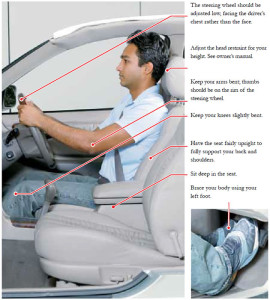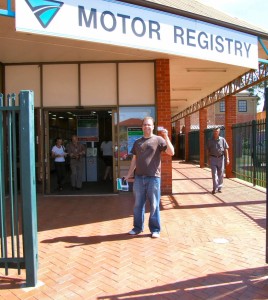NSW Driving test Basic driving techniques
The key to good driving technique is smoothness, and the secret to smoothness is good preparation.
DRIVING POSTURE
When you first get a car take the time to adjust the seat and controls to suit your
height and build. Correct driving posture reduces fatigue, improves your control
and allows the safety features of the vehicle to operate effectively.
SEATBELTS
For seatbelts to work effectively they should be adjusted ‘low, flat and firm’.
• Low – placed below your hips to fully secure your body weight.
• Flat – no twists, turns or folds.
• Firm – about every 15 minutes when you drive pull the belt firm to remove any
slack.
AIRBAGS
Airbags are a supplementary restraining system (SRS) designed to be used in
conjunction with seatbelts. To get the most benefit from the driver’s airbag the
steering wheel should be adjusted low, facing the driver’s chest rather than the face.
BRAKING TECHNIQUE
Correct braking is done in two stages, first put light pressure on the brake pedal
and pause (set up the brakes), then progressively apply the necessary braking
pressure (squeeze).
Two-stage braking (set up and squeeze) improves braking effectiveness, reduces
the likelihood of skidding and provides better control.
Harsh or excessive braking pressure may cause skidding and a loss of control,
particularly on wet or gravel roads.
STEERING TECHNIQUE
There are two main steering techniques, ‘push/pull’ and ‘hand over hand’.
Regardless of which method is used some general rules apply:
• Steering must be smooth and progressive.
• Reduce speed before steering and wait until the vehicle begins
to straighten before accelerating.
• When steering keep both hands on the outside of the steering wheel and
thumbs along the rim.


